Ancient Mesopotamia in a Nutshell
Civilization Name: Mesopotamia
Period: 3500 BC -500 BC
Originated Location: northeast by the Zagros Mountains, southeast by the Arabian Plateau
Current Location: Iraq, Iran, Syria, and Turkey
Meaning: land between rivers [Ancient Greek]
Major Highlights: First civilization in the world
Mesopotamian was the world’s earliest civilization between the land of the Tigris and Euphrates Rivers. It was bounded by the Zagros Mountains in the northeast and Arabian Plateau in the southeast. Irrigation and farming were easier because of the fertile land, and the tremendous water supply from the two rivers. The early settlers started to gather in small groups forming small villages and towns. The small villages and towns started to transform into larger towns, and the world’s first civilization “Mesopotamia” emerged.
Interesting Fact: The name came from the Greek word “between rivers”. Mesopotamia laid between the Tigris and Euphrates Rivers.
Pre-history and its origin
The evolution of Mesopotamia entirely took place in prehistory. It took an enormously long time, from 10,000 BC to 3500 BCE, for the world to bestow its first civilizations. The prehistory of Mesopotamia begins during the Neolithic period, but the writing began with a pictographic script in the Uruk IV period (CA. 4th millennium BCE).
Neolithic (New Stone Age) – 10,000 B.C.E
During the Neolithic period, there was a drastic change in the consumption of food. Neolithic People started to produce food rather than collect it for a short-term eating purposes. The world started to make a turn toward Agriculture and Animal Husbandry. V. Gordon Childe in 1993 termed it a Neolithic Revolution [1] The Neolithic period is further divided into four periods.
- Khiamian – 10200 BCE – 8800 BCE
- Pre-Pottery Neolithic A 8,500 B.C.E – 7,600 B.C.E
- Pre-Pottery Neolithic B 7,600 B.C.E – 6,000 B.C.E.
- Hassuna culture 6,000 B
Halaf culture – 6100 and 5100 B.C.E
Halaf is a prehistoric period of Mesopotamia that existed between 6100 and 5100 BCE. Even though the Halaf culture was spread through Mesopotamia, it was primarily located between present-day southeastern Turkey, Syria, and northern Iraq.
Halaf-Ubaid Transitional period
This period is created to fill the gap between Halaf style potteries and Ubaid style pottery in Northern Mesopotamia. There is very little Archaeological data about this period. The two sites in the Halaf Ubaid Transitional period are Tape Gawra, excavated in the 1930s and Tell Aqab which remains unpublished. The few archaeological data claimed that it existed for a couple of hundreds years, and the pottery style changed over this period.
Ubaid period – 6500 and 3800 B.C.E
The Ubaid Period existed in both North and South Mesopotamia. In South Mesopotamia, this period existed on the Alluvial plain between 6500 and 3800 BCE. It was later substituted by the Uruk Period. The Ubaid Period existed between 5,300 and 4,300 BCE in northern Mesopotamia.
Interesting Facts: By the year 5,000 BC, the people were transiting from the Stone Age to a more civilized world. The first civilization, called Sumer, emerged in Mesopotamia.
Timeline
10,000 B.C.E: Neolithic Revolution. Neolithic Peoples started to produce food rather than collecting it for a short term eating purpose.
9,600 B.C.E: End of the last Ice Age
8,500: B.C.E Pre-Pottery Neolithic A started. Agriculture and hunting became the primary source of food. Humans started living in tiny circular mud brick dwellings
7,600 B.C.E : Pre-Pottery Neolithic B Started. People depend heavily on domesticated animal to supplement their diet apart from hunter gathering and agriculture
6,500 B.C.E: Ubaid period Started.
6,100 B.C.E: Halaf culture started in Southern Mesopotamia
6,000 B.C.E: The Hassuna culture started in Northern Mesopotamia.
6,000 B.C.E : Nineveh is first settled.
5,500 B.C.E: The non-semetic people who speak basic sumerian language start to settle around Sumer
5400 B.C.E: The City of Eridu is founded.
4,500 B.C.E: The city of Uruk is founded
4,500 B.C.E: Sumerian Build their temples called ziggurats
3,600 B.C.E: The first written language Cuneiform is invented
3,200 B.C.E: The first wheel was invented
3,000 BCE – 2.900 BCE The earliest planned city called Mari was built on eastern bank of the Euphrates.
2,750 BCE Gilgamesh ruled Uruk
2,500 B.C.E: First written account of war.
2,500 B.C.E: The first Dynasty of Lagash under King Eannatum create a first empire
2,400 B.C.E: The first use of chariot
2300 B.C.E: Sargon united the Sumerian cities.
2,150 – 1,400 B.C.E: The Epic of Gilgamesh written on clay tablets.
2,038 B.C.E: King Shulgi of Ur builds a great wall in Sumer.
1,900 B.C.E: Assyrian came into power. Mesopotamia came under Assyrian rule.
1,792 B.C.E: Babylon came into power. The Babylonian king Hammurabi started to rule
1,772 B.C.E: One of the earliest codes of law, The Code of Hammurabi is established.
Geography
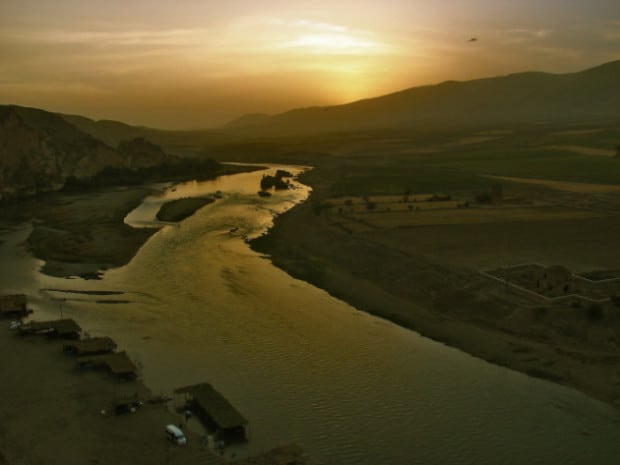
Mesopotamia in Greek means “between the rivers”. The region between the twin river – The Tigris and Euphrates were mostly vast, dry plains. Like the word “Mesopotamia”, the name of the two rivers was derived from the Greek word. The original name of the Tigris River was the Idiglat and the Euphrates was the Buranum [2].
Today, the 1150 miles long river – the Tigris – originated from The Turkey until the city of Cizre, and then formed a border between Turkey and Syria. It crosses into Iraq at Faysh Khabur. The Tigris River flows 249 miles in Turkey, 20 miles of the border between Turkey and Syria, and 881 miles in Iraq
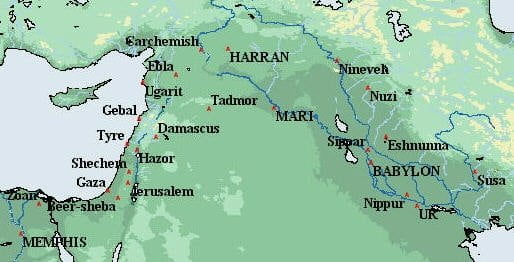
The Euphrates River is 186 miles long, divided between Turkey (764 miles), Syria (441 miles), and Iraq (658 miles). It originates in the eastern highlands of Turkey, forming major Tributaries – the Karasu and the Murat. It crosses Turkey and enters Syria at Karkamis. It joins other two major tributaries that originated in turkey – The Khabur and the Balik. The river flows across the Syrian Plateaus before entering Iraq near Qusaybah [3]
In the present day, the Tigris and Euphrates merge into the Shatt al-Arab before combining into the sea, but in ancient times they flowed into the Persian Gulf separately.
Mesopotamia had several regions with its distinct geography. The major assets of Mesopotamia were water and fertile soil. Mesopotamia was indeed a gift of Tigris and Euphrates. The every year flood from the Tigris and Euphrates river, covers the nearby land with silt, from the river’s bottom which was very good for growing the crops.
The southern part of Mesopotamia was an alluvial, wide, flat plain. The cities were developed along the river and the people had to depend on the river for irrigation.
Northern Mesopotamia was primarily hills and the mountains. The land was fertile. People had to depend on the seasonal rain, and the stream flowing from the mountain for agriculture.
Northern Mesopotamia Geography
The northern region or upper Mesopotamia was a fertile land because of the seasonal rain and rivers flowing down from the mountains.
The rivers flowing down from the mountains also gave the people of northern Mesopotamia the possibility of irrigation. There has been evidence of irrigation on a bigger scale in human history.
The vast plains cut in half by the limestone that rises suddenly in the plains. It was densely populated. Today it is just a place of bushes and trees.
Geography of Southern Mesopotamia
Southern Mesopotamia was marshy land and many flat barren plains. Cities were developed along the rivers and irrigation was used in bundles to try and grow something on the infertile plains. Since the settlers in this area did not have any natural resources, they had to have much contact with settlers in other areas in order to trade and have enough food to support their families.
Southern Mesopotamia was also known as lower Mesopotamia. It was the home to the Chaldean marshes, the river of Babylon, the inland freshwater sea of Naja, and was surrounded by red sandstone cliffs standing high above the ground.
There was a primitive seaport named Eridu in the south of Ur on the western bank of Euphrates, but today this location is approximately 130 miles from the sea. Due to the silting up of the shore, the city’s function as a harbor ceased to exist.
The first permanent settlements known were found in lower Mesopotamia and this is why this place is known as the cradle of civilization. The land was so fertile that crops could be harvested twice a year and the third harvest was used for feeding the livestock owned by the inhabitants.
The population in both upper and lower Mesopotamia increased and the inhabitants changed the landscape from being a swamp not fit for human habitation to an extremely fertile area.
They covered the lands by a network of canals making sure agriculture was possible all over, and the canals were planned and executed with skill and great ingenuity benefitting their entire population ensuring them the possibility to get the most out of the fertile lands.
Mesopotamia in Modern Day
The war between Iran and Iraq in the 1980´s was one of the many conflicts in this area. Oil is another reason for conflicts. Perhaps the future will hold something better for the cradle of civilization. Only time will tell, but the geography and the history of Mesopotamia show that the possibility to change the land once more to its state of prime and fertility is not impossible and hopefully this will happen sooner than later.
Government of Mesopotamia
The foundation of Mesopotamia was built on agriculture. Farming feeds most of the population of the villages. If the crops go wrong, the village would suffer from starvation. People believed in gods and divine power. Priests who had a great influence on god were the most important people in Mesopotamia. Villagers need a leader to make agriculture more sustainable. Irrigation by building the canals and damp was the effective way to increase agricultural surplus. The priest and the secular leader known as lugal were the capable people that could guide the labor. Gradually priest and lugal started governing in the most complex problems. Lugal became the powerful person that started to govern the city. The job of the Lugal was secular. Mesopotamians considered Lugal as a Patron god that govern and protect the cities. Later, King form dynasties and the throne is passed from father to son. [4]
Mesopotamia was divided into separate smaller cities or kingdom with different leadership and government.
Ancient Sumer Government
The Sumerians elect the king from the assembly. Sumerian had unwritten laws. They believed that the gods elect the kings, and the king has divine power. There are various poems and stories from the ancient Sumerian time, where it praises Sumerians king Gilgamesh, as “he who knew everything”. Even though there was an unwritten law, punishment existed for each infraction crime. Everybody knows about the punishment for the crime.
Ancient Babylonian Government
Babylonia made the first written law in history which was written on the stone table. Most of the law was the reflection of Sumerian law. The law was very strict and applied to everyone. For Instance:
“If a husband found her wife cheating or told her husband that she is not her husband, then the husband has a right to push her in the river”.
“If a patient died because of the surgeon, one of the hands of the surgeon would get cut off”.
Ancient Assyrian Government
The government of Assyria was organized on the basis of the social classes. Assyria was a large empire with a complex structure. Kings were in-charge and controlled the governors. The government has a hierarchical structure. King was on the top of the society followed by Government officials, priests, and Nobles. Solders were the strong force of the whole Mesopotamia region. They defend the cities and are well known for their brutality
Writing and Language of Mesopotamia
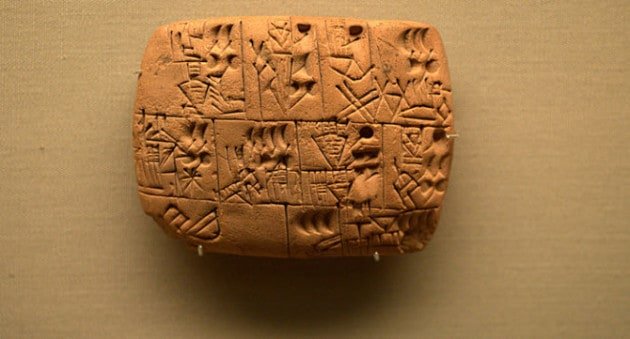
Sumerians were the first people that developed the form of writing called cuneiform. The people needed a system to keep track of basic information about crops, taxes, business activities, and government records. The Sumerians invented pictograms to keep records of information. Over the period of time the writing involved in a script that is known as cuneiform. The writing was scribed on the clay tablet. A stylus made up of reed was pressed on the moist clay. The writer had to let it dry for sometimes, which will eventually become the permanent writing
Cuneiform was adopted by the Babylonians and Assyrians. It was replaced by Phoenician alphabet at the end of the neo-Assyrian Empire.
Interesting Facts: Cuneiform was deciphered by Henry Rawlinson and other scholars in the 1850s.
Daily Life in Mesopotamia
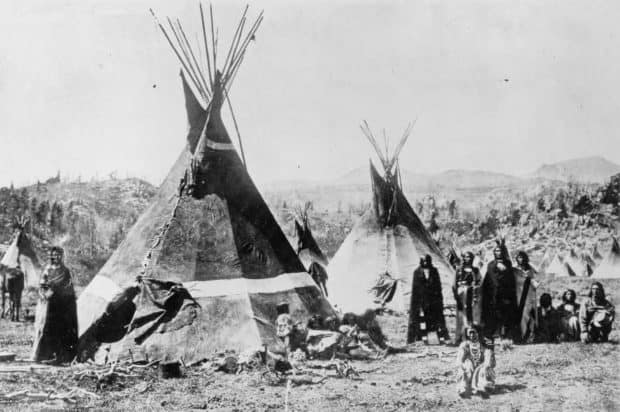
The daily life of Mesopotamia was different depending on their social class. Upper class, such as priests and kings rejoice the power and responsibility, while the lowest class slaves were just an enchant of their master. The farmers mostly lived outside the city walls.
The men in the family had more power than a woman. The men were responsible for trading, business, and were the master of the house. Women stayed at home and served the family doing the daily housekeeping and cooking.
Mesopotamian lived in a simple rectangle mud brick home up to level three. The mud brick acts as a good insulator to make the house cool during the hustling summer and make the house warmer in the winter. [5]
Festivals were common among Mesopotamian. Most of the festival was related to agriculture. The Sumerian celebrated Akitu, the festival of sowing barley in the first month (March/April of the year. This festival was celebrated on the first day of the year in the Babylonian calendar. Hence, it is also known as a New Year festival.
King present was necessary for an important festival. Kings were taken as a god, and Mesopotamian think that the king present in the festival ceremony plays a religious role.
Religion
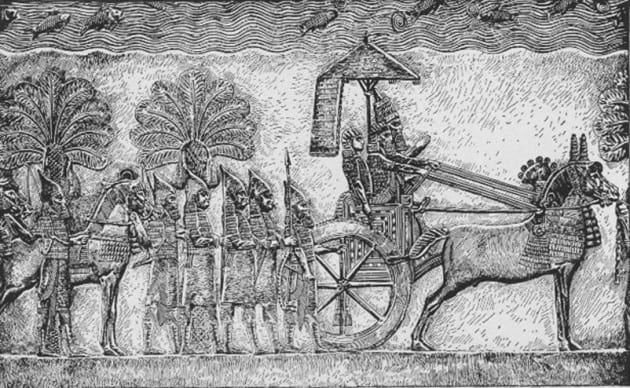
Mesopotamian religion was polytheistic. The Ancient Mesopotamians believed in the number of gods instead of one. They also believed that there is a demon created by god, which could be good or evil. Mesopotamian believed that the supernatural forces like storms, rivers, mountains, wind, marshes, and fire were all living things. They believed that these forces controlled their world as mysterious and impersonal. These forces were called Numina.
Temples were built in ancient Mesopotamia to worship the Gods and Goddesses.Sumerians, Babylonians, and Assyrians built Ziggurats temple. Temples weren’t built for the public to worship. Only priests were permitted to go inside the temple. It was believed that the priests were the only people that had a job to talk to the Gods and Goddesses. The priest was taken as the communicator between people and God.
It is common to have at least one temple in each city of Mesopotamia. Mostly the cities flourished with many temples. Each temple was dedicated to a specific God. The biggest temple was usually of its patron. The main temple of Ur was built for Nana, the mood god. The Babylon main temple was dedicated to Marduk, which covers nearly 10 square miles.
Economy and Society
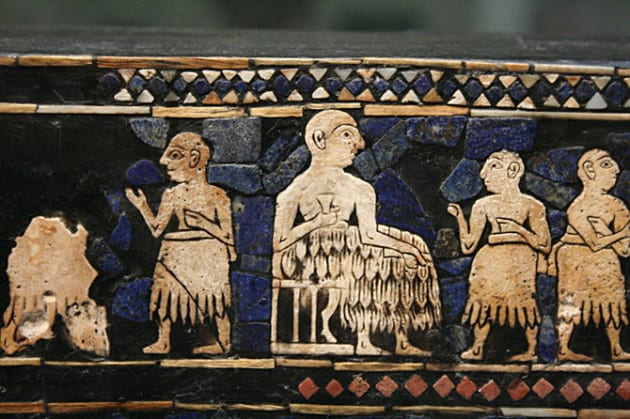
Most of the Mesopotamian were farmers. They lived their life cultivating crops in a small plot of land. The Mesopotamian economy was based on farming. The abundant water resources of the Euphrates and Tigris River made agriculture sustainable in Mesopotamia. The most common crops were wheat and barley. Mesopotamian also grew apples, melons, figs, and grapes. Their primary vegetables were beans, eggplants, lettuce, onions, and sesame seeds. They also domesticated goats, sheep, and cows. [6]
Despite the fertile land with abundant water supply, Mesopotamia had a hot, dry climate. The river could grow massively during the monsoon and result in frequent floods. Mesopotamia found a way to tackle this problem. They were the first civilization that attempted to control the water on a large scale by building the canal and drains for irrigation.
The farmers used the locally available clay, stone, and timber for the development of the farming tools.
People were divided into different social classes on the basis of the job they performed, their assets and their relationship with the leader. The highest class were king and priest whereas lower class were slaves and criminals.
Priests:
The Mesopotamian took the priest as a communicator between the gods and them. They were equals and received the same power and honor like the king. Each city in Mesopotamia had a temple. The temples had two administrators. The chief priest that takes care of all the sacred and religious duties. He was the communicator between the God and the people. His task was to perform purification, exorcism, and write hymns and music. The other administrator mainly ran the business of the temple. The temple was not only a religious place. It also ran a distance trade network providing employment to the city’s inhabitants.
The Priest was not an easy job to get. The person who wants to be a priest should be young and should be in a perfect body. He/she should come from a good family background. Normally, the young boys who are good in the scribe school became the priest.
Kings:
Ancient Mesopotamian believed kings as the representation of gods. The ancient Sumerians proverbs stated that – “Man is the shadow of a God, but the king is is a reflection of God”. The King had a responsibility to perform religious rituals, manage law, execute justice, guide the administration to manage affairs, and maintain peace in the kingdom.
Mesopotamia didn’t have a centralized government. Each small city has their own king. There was constant warfare between these small cities. War was considered to be the divine mission of the kings. The conquest of more cities means more slaves, more people to pay taxes and more land to grow crops.
The most important Mesopotamian leaders were Ur-Nammu (king of Ur), Hammurabi (Old Babylonia) Ashur-uballit II and Tiglath-Pileser I Assyrian Empire), and Sargon (Akkadian Empire). Landowner,
Government Official, professional soldiers, scribes and Wealthy Merchant:
Government officials and wealthy merchant were the upper class people in Mesopotamia. Government officials were responsible for creating law. The Mesopotamian Judicial system had clear guidelines for settling disputes.
Mesopotamia wasn’t a peaceful place. There was constant warfare. Soldiers were the one that protects the people of the city from external threats. They were the proud members of city the state.
The Scribes were literate people who can read and write cuneiform. Scribe (writer) was a prestigious job. The rich boy would only be eligible to become a scribe. He had to go to school for 12 years to learn cuneiform. Cuneiform was not an easy language.
A Merchant who trades with neighborhood city states had a good source of income in Mesopotamia. Not all the traders were upper class people. Wealthy merchants were taken as the upper class people in Mesopotamia.
Farmers and Artisans:
Farmers and Artisans were the lower class people who lived a hard life. The Farming was done with a locally available tool made from the clay, stone and timber. During the first millennium B.C.E, iron was used to make tools for farming, but it changed eventually because metal was expensive. The farmers used sheep, goats, and cows to make butter. Eating the domesticated animal was common among Mesopotamian farmers.
Artesian made basic necessities like dishes, pot, weapons, boats, jewelry and clothes for a day to day life in Mesopotamia. Artisans played an important role in the Mesopotamian Economy.
Slaves and Criminals:
Slavery was common in Mesopotamia. Slaves and Criminals were synonyms in Mesopotamia. Most of the slaves were either criminal or war imprisonment. Slaves were sold in public market place in an auctions. Free member of the society can be a slave to repay a family debt. Once the debt is paid, they could work on other jobs to earn money. [7] Slaves were among the lowest class citizens in Ancient Mesopotamia.
Cities and People of Mesopotamia
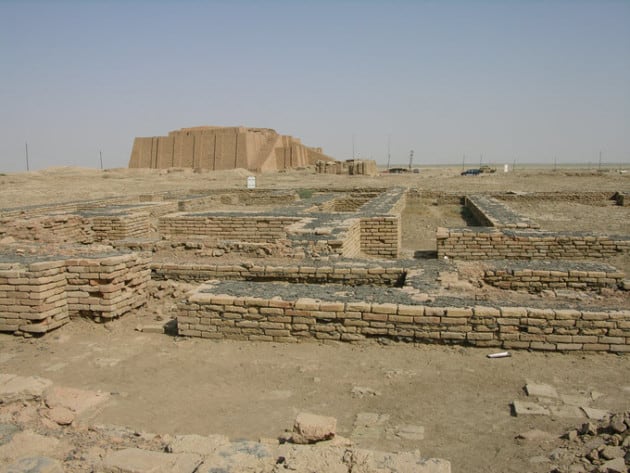
Mesopotamia was not the only city that was ruled by a single government. It had multiple cities with their own government, leadership, and culture. Sumerians (3500-2300 BC), Akkadians (2180-2340 BC), Babylonians (1792-1750 BC), Hittites (1600-1200 BC), Assyrians (1000-612 BC) and the Persians (559-331 BC)
Sumerians:
The first settlement between 4500 and 4000 BCE in Sumer was by a non-Semitic people who spoke their own language. These people migrated from the village called “Al-Ubaid”, where their first existence was discovered. Today, commonly known as proto-Euphrateans or Ubaidians were the people that started agriculture, trading, and different industries such as pottery, metalwork, leatherwork, and masonry. These are the people that led the groundwork for the earliest true civilization on the earth.
The Sumerians from around Anatolia (present day Turkey) migrated to Sumer around 3300 BC [8]. Sumerian refers to the people of Sumer, located in southern Mesopotamia between the Tigris and Euphrates rivers (modern-day Iraq and Kuwait). The Sumerians invented the foremost technology that made human existence possible. The earliest form of writing “cuneiform”, wheel, agriculture, irrigation, and trading were invented by the Sumerians.
Interesting Facts: Sumer was not founded by Sumerians. The name of the earliest cities such as Ur, Lagas, and Nippur wasn’t from Sumerians Language.
Uruk – Ancient City of Sumer
The story of the civilization started in Uruk, one of the oldest city in the world. The ancient Mesopotamia was the home of hunter gathers, farmers, fisher’s men. In Around 3200 BC, Uruk emerged as a city in Southern Mesopotamia, surrounded by a massive wall, built by King Gilgamesh.
Akkadians (2180-2340 BC)
The Akkadian was the first empire in history built by King Sargon of Akkad. Sargon Conquered summer in the 23rd century BC and led a military expedition to conquer further east and north. The Akkadian spoke a Semitic language which is quite different from the Sumerian language. Bilingualism was a symbol of cultural representation between the Sumerians and Semitic in the 3rd millennium BC. The Akkadian gradually replaced the Sumerian language somewhere between 2nd and 3rd Millennia BC.
Akkadian invented the abacus which was later refined by the Babylonians. It was carried to China via the Silk Road and the Chinese used it as a primary tool for calculation. Akkadian language was the major language that was used for trade and commerce at that time.
Babylon
Babylon was the center city of Ancient Mesopotamia for nearly two millennia and was located 60 miles south of Baghdad in Modern Day Iraq. Babylon was popular for the first written law created by Hammurabi, and for the construction of a hanging garden – one of the treasures of the ancient world. It was founded prior to the reign of Sargon of Akkad. After Hammurabi ascended the throne, Babylon transformed into a massive empire from a small kingdom.
Assyrian
The Asriyan was an independent city state of Ancient Mesopotamia that existed from the 25th century BC to 612 BC. The Assyrian Period was divided into the three periods – Old Assyrian period, Middle Assyrian Period, and The Neo-Assyrian Empire. It has close ties with Sumerian and Akkadian states.
Assyrian were the first people to invent iron weapons. They developed unique war techniques and had the most powerful army at their times.
Art and Culture
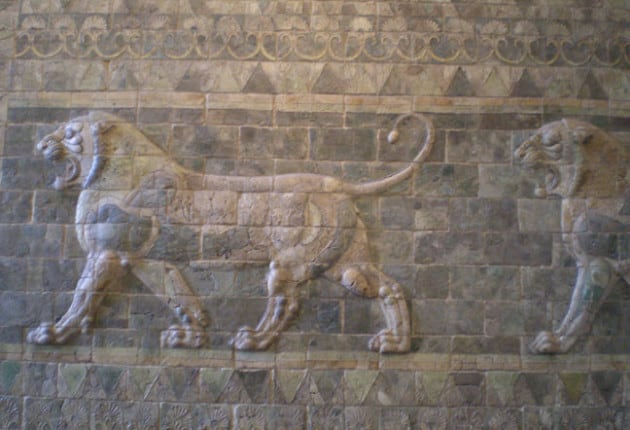
Ancient Mesopotamia has some of the earliest surviving arts dating back to 3500 BC. Art was made using stone, alabaster, marble, and shells. Archaeologists have found the painted ornament pottery vessels, one of the earliest uses of art discovered from the Neolithic to the Chalcolithic age. [9] The arts of Mesopotamia have survived from the hunter gathers group to the different Mesopotamian civilization such as the Sumerians, Akkadian, and Assyrian empires
Sumerian art was primarily used for religious purposes and was in intricate shapes and complex. The popular portrait – Gudea and ruler of Lagash dated back from 2,400 BC was made from Marble. The sculpture, architecture, and portraits of Sumerians influenced many other civilizations. The cylinder seal, a small carved cylinder of stone or metal, was one of the sophisticated art of the Sumerians.
The head of Akkadian ruler is one of the antique art of Akkadian. The head of Akkadian ruler is one of the antique art of Akkadian. The portrait represents the various displays of violence – the cut off ear, the flattened nose at the tip, and gouged left eye socket.
Assyrian kings were rich. Most of the art was decoration for the palace for the king. Assyrian palaces were of huge scale and glamorous. Ashurbanipal decorated the wall of his palace with the image of himself performing the great skills and bravery.
Science, technology, and Inventions

Mesopotamia transformed from a land of hunter gatherer groups to a more organized social group where people started agriculture and farming. Mesopotamians were innovative. They realized that the crops need a substantial amount of water in order to grow properly. The concept of irrigation was invented. Mesopotamian built cannons and damp for irrigation. The annual inundations and agricultural activities result in the development of the calendar, based on the observation of the moon, stars, and the sky.
The first writing cuneiform was invented by Sumerians which led to the formation of the world’s first recorded law known as the “Code of Hammurabi”. The writing also led to the first major piece of literature called the Epic of Gilgamesh.
Mesopotamian contribution to the world of science and technology is remarkable. They invented wheels, boats, chariots, and plows that became a necessity in different civilizations.
The Code of Hammurabi in Babylonia illustrates that if a patient dies because of the surgeon, the surgeon shall be punished, which reflects the practices of surgery. Sumerians were the first people that developed the concept of counting. They also developed the sexegesimal, or base 60.
Mesopotamians also invented the map and the first urbanized city monumental mud-brick by King Gilgamesh.
Learn the Top 10 inventions and discoveries by Mesopotamian
Reference:
- https://www.public.asu.edu/~mesmith9/1-CompleteSet/MES-09-Childe-TPR.pdf.[Accessed 02 January 2016].
- Stephen Bertman, 2005. Handbook to Life in Ancient Mesopotamia. 1 Edition. Oxford University Press.
- https://www.harcresearch.org/sites/default/files/Project_Documents/Reports1-EuphratesTigris.pdf. [Accessed 02 January 2016].
- https://oi.uchicago.edu//sites/oi.uchicago.edu/files/uploads/shared/docs/ois4.pdf. [Accessed 05 January 2016].
- Marc Van De Mieroop, 1999. The Ancient Mesopotamian City. 1 Edition. Oxford University Press.
- http://www.palmbeach.k12.fl.us/eagleslandingms/MesopotamiaAgriculture.pdf. [Accessed 21 January 2016].
- Shilpa Mehta-Jones, 2004. Life in Ancient Mesopotamia (Peoples of the Ancient World). Edition. Crabtree Pub Co.
- 2010. Mesopotamia: The World’s Earliest Civilization (The Britannica Guide to Ancient Civilizations). 1 Edition. Rosen Education Service.
- https://www.persee.fr/doc/paleo_0153-9345_2005_num_31_2_5125 [Accessed 14 January 2016].
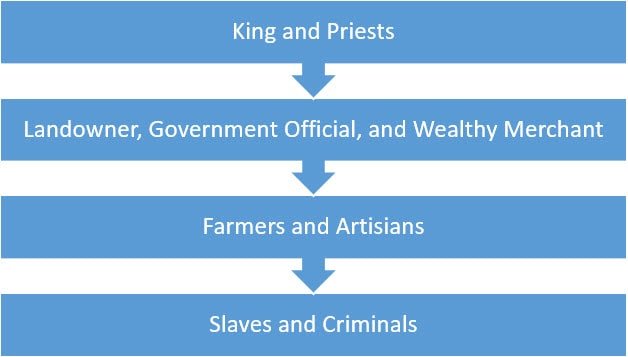
Great article! Thought I would bring it to your attention that Mesopotamia means the land between rivers, talking specifically about the Tigris and Euphrates. This means its location is modern day Iraq. Please correct this statement => Current Location: Iran, Syria, and Turkey